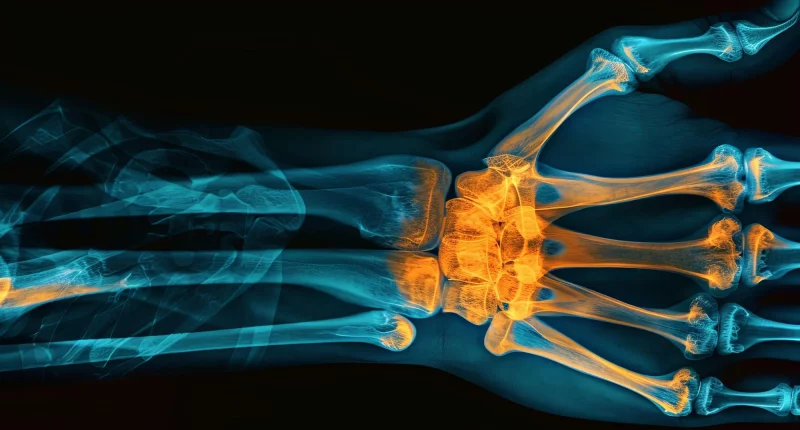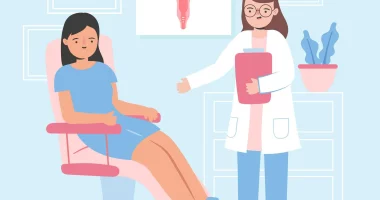Chondrosarcoma is a kind of bone cancer that starts in cartilage cells. Cartilage is a flexible, and strong tissue that protects the bone ends and helps cushion the joints. It’s also found in parts like the nose and ears.
Symptoms of chondrosarcoma can differ, but common signs include pain and swelling where the tumor is located. The main treatment for chondrosarcoma is usually surgery to remove the tumor.
Chondrosarcoma can happen to anyone, but it most often affects individuals over 40 years old.
Symptoms
Chondrosarcoma symptoms can vary from person to person and largely rely on the size and place of the tumor. The common symptoms are inflammation and pain in the area where the tumor is present.
In addition to these, individuals may experience persistent pain that does not improve with rest and may notice a large lump (mass) on the bone affected by chondrosarcoma. These symptoms usually last for an extended time, with some individuals experiencing them for many months or even years before seeking medical attention.
Causes
The exact cause of chondrosarcoma is not well understood, and its development can be unforeseeable. One contributing factor is abnormalities in chromosomes, which are structures in our cells that carry DNA. When chromosomes break apart and reassemble wrongly, it can disrupt the normal function of cells. This disruption may lead to the formation of chondrosarcoma, as the malfunctioning cells can start to grow uncontrollably.
Another potential cause of chondrosarcoma is the transformation of non-cancerous tumors in cartilage into malignant ones. Conditions like enchondroma and osteochondroma, which are typically non-cancerous, can occasionally become cancerous over time. When these benign tumors turn into chondrosarcoma, they can lead to the development of cancerous growths in the cartilage.
Diagnosis
When a person exhibits signs of chondrosarcoma, like pain and inflammation, a healthcare provider will typically begin the diagnostic process with various tests. Initially, imaging tests like an MRI or CT scan are used to evaluate the place and size of the tumor and to check if the cancer has spread to other parts of the body.
If a tumor is detected, the next step is to confirm whether it is chondrosarcoma. This is done through a biopsy, where a healthcare provider uses a needle to obtain a tiny tissue sample from the tumor. This sample is then sent to a laboratory for detailed examination to determine if the tumor is cancerous and to confirm the diagnosis of chondrosarcoma.
Treatment
The treatment plan for chondrosarcoma depends on the location and size of the tumor. Surgery is generally the initial treatment recommended by doctors. For high-grade chondrosarcoma, a procedure called wide en bloc excision is commonly used. This method involves removing the full tumor along with a margin of surrounding healthy tissue to ensure all cancerous cells are removed.
For low-grade chondrosarcoma, a less invasive procedure known as intralesional curettage may be performed. In this technique, the tumor is removed piece by piece through a small cut, which may outcome in less damage compared to wide en bloc excision. However, this approach might not completely eliminate the tumor, heightening the chance of recurrence.
In cases where surgery is not feasible or as an additional treatment to prevent recurrence, radiation therapy may be recommended. Radiation can help to shrink or control the tumor and decrease the chance of it coming back.
Chemotherapy is another treatment option but is generally reserved for cases where surgery is not possible or when the cancer has been transmitted to other areas of the body. But the chemotherapy is not usually effective for most kinds of Chondrosarcomas.
Prevalence
Chondrosarcoma is a relatively rare form of bone cancer, representing only about 10 to 20 percent of all malignant bone tumors. Its rarity means that it is less commonly encountered compared to other types of bone cancer. In the U.S., the incidence of chondrosarcoma is around 1 in 200,000 individuals each year, highlighting its uncommon nature.
This kind of cancer predominantly affects adults, with a higher incidence observed in this age group compared to children. Due to its rarity and the fact that it is more frequently diagnosed in older people, chondrosarcoma is less familiar to many compared to more common cancers.
Genetic Factors
Currently, there is no proof to recommend that chondrosarcoma itself is inherited or inherited in families. The development of chondrosarcoma does not appear to be directly linked to genetic factors passed down from parents to children. However, there is a connection between certain genetic conditions and an increased chance of developing chondrosarcoma. For instance, multiple osteochondroma, a condition where individuals develop multiple benign tumors in the cartilage, can be hereditary.
Individuals with multiple osteochondroma have a higher risk of developing chondrosarcoma later in life. Studies show that approximately 15 out of every 100 individuals with multiple osteochondroma may eventually develop chondrosarcoma. Although multiple osteochondroma can be passed down through families, the direct inheritance of chondrosarcoma itself is not established.
Summary
Chondrosarcoma is an uncommon type of bone cancer that forms in cartilage cells, affecting about 1 in 200,000 individuals annually in the U.S. It most commonly impacts adults and is diagnosed through imaging tests and biopsies. Treatment typically involves surgery, with options varying based on tumor grade, and may include radiation or chemotherapy if surgery isn’t possible. While chondrosarcoma itself isn’t known to be inherited in families, a related condition, multiple osteochondroma, can be hereditary and increases the chance of developing chondrosarcoma.









